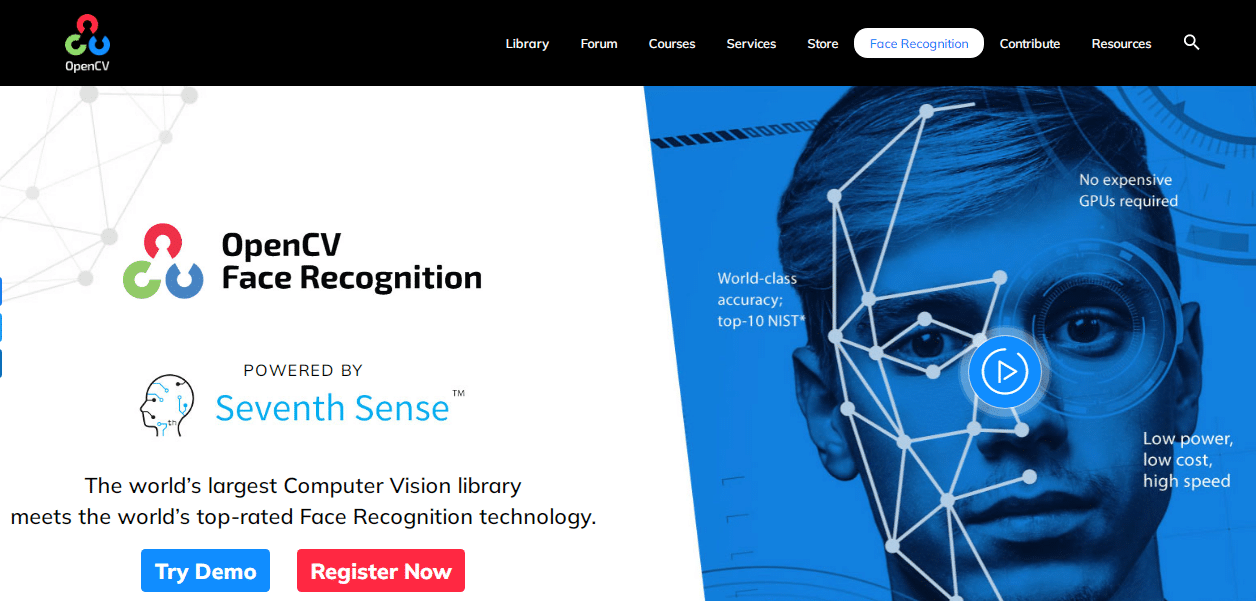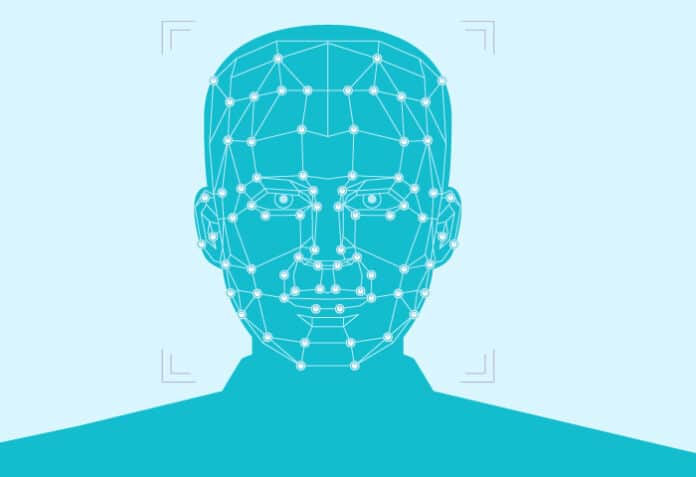AI technology is becoming more accessible than ever before, thanks to computer vision and IoT. OpenCV, an open source computer vision and machine learning software library, is helping small and big businesses embrace AI with ease.
Computer vision is a field of artificial intelligence (AI) that involves the use of algorithms to enable machines to interpret and understand images or videos from the real world.
With computer vision, machines can not only see but also understand the world around them like never before. It’s incredible how this technology has made it possible for AI systems to recognise faces, objects, and even emotions! And it doesn’t stop there! From healthcare to agriculture, computer vision is revolutionising the way we approach complex problems. With its integration with IoT, the possibilities are endless!
But why is this integration so critical? The answer is simple: accuracy. With computer vision, we can eliminate human error and ensure that the decisions we make are based on reliable data.

IoT meets computer vision for a wide range of applications
The integration of AI and Internet of Things (IoT) has opened up new avenues for the application of computer vision in a range of industries and use cases.
Intelligent spaces: One of the primary applications of computer vision in the context of AI and IoT is in the field of smart homes and buildings. With the integration of sensors and cameras, buildings can be equipped with systems that monitor and analyse data such as temperature, light, and occupancy. This information can be used to automate various processes such as adjusting the temperature or turning off lights when a room is unoccupied.
Healthcare: By integrating cameras and sensors into medical equipment and devices, healthcare providers can collect data and images to aid in diagnoses and treatment. For example, computer vision algorithms can analyse X-ray or MRI scans to detect early signs of disease or abnormalities.
Manufacturing: In the manufacturing industry, computer vision and AI can be used to optimise production processes and improve quality control. By integrating cameras and sensors into manufacturing equipment, manufacturers can collect data and images to identify defects and improve efficiency. Additionally, computer vision can be used to monitor employee performance and ensure compliance with safety regulations.
Defence industry: Computer vision, AI and IoT have also found several applications in the defence industry.
- Surveillance and security: Computer vision algorithms can be integrated with cameras and sensors to monitor sensitive areas and detect potential threats. The system can identify individuals and objects, and track their movements in real-time, enabling a quick response to any security breaches.
- Autonomous systems: Drones and unmanned vehicles equipped with computer vision and AI can be used for surveillance and reconnaissance, as well as for carrying out missions such as search and rescue operations or delivering supplies to remote areas.
- Predictive maintenance: In the defence industry, equipment downtime can have serious consequences. By integrating sensors with computer vision and AI, maintenance teams can monitor equipment performance in real-time and predict when maintenance is required, reducing downtime and ensuring readiness.
Agriculture: Computer vision can be used to monitor crop growth, detect plant diseases or pests, and optimise irrigation and fertilisation. This can improve crop yield and reduce waste.
Retail: Retailers can use computer vision and AI to analyse customer behaviour, such as how they interact with products and which products they prefer. This data can be used to improve store layout, inventory management, and personalised marketing strategies.
Traffic management: Integrating sensors and cameras with computer vision and AI can help monitor traffic flow, identify traffic patterns, and optimise traffic lights. This can reduce traffic congestion and improve road safety.
OpenCV: Encouraging innovation
OpenCV (Open Source Computer Vision Library) is an open source computer vision and machine learning software library that is widely used in various fields such as robotics, video analysis, and image processing.
One of its key features is the ability to process images and videos in real-time. It also offers a wide range of functions and algorithms for image processing, feature detection, object recognition, and more. As OpenCV is cross-platform, it can be used on various operating systems such as Windows, Linux, and macOS. The library is written in C++, but has interfaces for Python, Java, and other programming languages.
OpenCV’s open source nature enables developers to customise and extend its functions to suit their specific needs. This makes it a popular choice for both researchers and developers in the field of computer vision.
Installation:
- Install Python on your system if it is not already installed.
- Install OpenCV using pip by running the following command in your terminal: pip install opencv-python.
Working with OpenCV:
- Import the OpenCV library in your Python code using the import cv2 command.
- Load an image or a video file using the cv2.imread() or cv2.VideoCapture() functions, respectively.
- Perform operations such as resizing, cropping, filtering, or object detection using the various functions available in the OpenCV library.
- Display the result using the cv2.imshow() function.
- Wait for a key press using the cv2.waitKey() function.
- Release the resources and close the window using the cv2.release() and cv2.destroyAllWindows() functions, respectively.
- Here is an example code snippet that demonstrates how to load an image using OpenCV, resize it, and display it:
import cv2 # Load the image img = cv2.imread(‘image.jpg’) # Resize the image resized_img = cv2.resize(img, (500, 500)) # Display the image cv2.imshow(‘Image’, resized_img) # Wait for a key press cv2.waitKey(0) # Release the resources and close the window cv2.release() cv2.destroyAllWindows()
OpenCV provides a comprehensive collection of optimised algorithms for various computer vision and image processing tasks. With the above guide, you can start exploring and experimenting with OpenCV to develop your own computer vision applications.
Picturing the future: OpenCV’s game-changing applications
OpenCV can be used in assorted high performance applications.
Object detection and recognition: Researchers can use OpenCV to develop algorithms that detect and recognise objects in images or videos. This could be applied to a variety of industries, including surveillance, automotive, and robotics.
Medical imaging: OpenCV can be used to analyse medical images such as X-rays, MRIs, and CT scans. Researchers can develop algorithms to detect and classify different types of diseases, improving the accuracy and efficiency of medical diagnoses.
Autonomous vehicles: This library can be used to develop computer vision systems for autonomous vehicles, enabling them to detect and respond to objects in their environment. This could lead to safer and more efficient transportation systems.
Augmented reality: It can be used to develop augmented reality applications, overlaying digital information onto real-world objects. This could be applied to gaming, education, and advertising.
Human-robot interaction: OpenCV can be used to develop computer vision systems that enable robots to interact with humans more effectively. This could be applied to a variety of industries, including healthcare, manufacturing, and services.
OpenCV also provides a broad scope for research and development across various fields. It can be extensively used in robotics, autonomous vehicles, medical imaging, and surveillance systems, among others. OpenCV’s extensive range of features and algorithms, including image processing, object detection and tracking make it a popular choice for researchers and developers alike. Its open source nature provides opportunities for customisation, making it a powerful tool for developing computer vision applications tailored to specific needs.
OpenCV’s libraries for AI and real-time scenarios
OpenCV provides a wide range of tools and functionalities for building computer vision applications. Here are some OpenCV-based open source libraries for AI and real-time scenarios.
- YOLOv4: YOLOv4 is an object detection algorithm that uses deep neural networks to detect and classify objects in real-time. It is based on the Darknet framework and uses OpenCV for image processing (https://github.com/AlexeyAB/darknet).
- OpenPose: This is an open source library for real-time 2D and 3D pose detection. It uses deep learning and computer vision techniques to estimate the poses of multiple people in real-time (https://github.com/CMU-Perceptual-Computing-Lab/openpose).
- TensorFlow Object Detection API: This is an open source library for object detection and classification. It uses TensorFlow and OpenCV for training and inference of deep neural networks for object detection in real-time scenarios (https://github.com/tensorflow/models/tree/master/research/object_detection).
- DLib: DLib is a modern C++ toolkit for building computer vision applications. It includes a wide range of algorithms and tools for object detection, face recognition, and more (https://github.com/davisking/dlib).
- OpenCVSharp: This is a .NET wrapper for the OpenCV library. It allows developers to use OpenCV in their .NET applications.
- Emgu CV: A cross-platform .NET wrapper for the OpenCV library, it provides access to OpenCV functions from .NET languages such as C#, VB.NET, and F#.
- OpenFace: OpenFace is an open source facial behaviour analysis toolkit that uses OpenCV for facial landmark detection and tracking.
- Mahotas: A Python library for image processing and computer vision, it uses OpenCV for basic image processing operations.
- scikit-image: This Python library for image processing and computer vision uses OpenCV for some image processing functions.
These OpenCV-based open source libraries provide developers with a range of tools and functionalities for building AI and real-time computer vision applications.
Leading platforms for computer vision
If you are looking for similar options as the OpenCV platform, we have you covered. Here are some popular programming platforms and libraries for computer vision with their respective URLs.
- TensorFlow: TensorFlow is an open source platform for developing and deploying machine learning models. It includes a module for computer vision tasks such as image recognition, object detection, and segmentation (https://www.tensorflow.org/).
- PyTorch: PyTorch is an open source machine learning framework that offers a range of tools and libraries for building and deploying deep learning models. It has a module for computer vision tasks such as image classification, object detection, and segmentation (https://pytorch.org/).
- Keras: Keras is a high level neural networks API, written in Python and capable of running on top of TensorFlow, CNTK, or Theano. It provides a simple and intuitive way to build and train deep learning models for computer vision tasks such as image recognition and segmentation (https://keras.io/).
- MATLAB: MATLAB is a programming language and numerical computing environment widely used in engineering and scientific applications. It includes a comprehensive toolbox for computer vision tasks such as image processing, computer vision system design, and machine learning (https://www.mathworks.com/products/computer-vision.html).
- SimpleCV: SimpleCV is an open source framework for building computer vision applications in Python. It provides a high level interface for common CV tasks such as image processing, feature extraction, and object recognition (https://simplecv.org/).
- TorchVision: TorchVision is a computer vision library that is part of the PyTorch ecosystem. It provides tools and models for image and video classification, object detection, and segmentation (https://pytorch.org/vision/).
- ImageJ: ImageJ is open source image processing and analysis software written in Java. It includes a range of tools for image processing, segmentation, and feature extraction (https://imagej.net/).
These platforms and libraries provide developers with a range of tools and functionalities to build and deploy computer vision applications.
Final thoughts
It’s no secret that AI is the future. The synergy between computer vision and IoT can solve some of the world’s most pressing issues. But as exciting as that sounds, the technology has remained quite exclusive to those who have the budget to back it up. That’s where OpenCV comes in.
By democratising AI, platforms such as OpenCV are redefining scenarios that have traditionally been out of reach for smaller businesses. This shift not only promotes innovation but also opens doors for new talent and creates an opportunity for previously underserved markets to thrive.
Having access to powerful technology shouldn’t be exclusive. OpenCV helps level the playing field for everyone.










































































